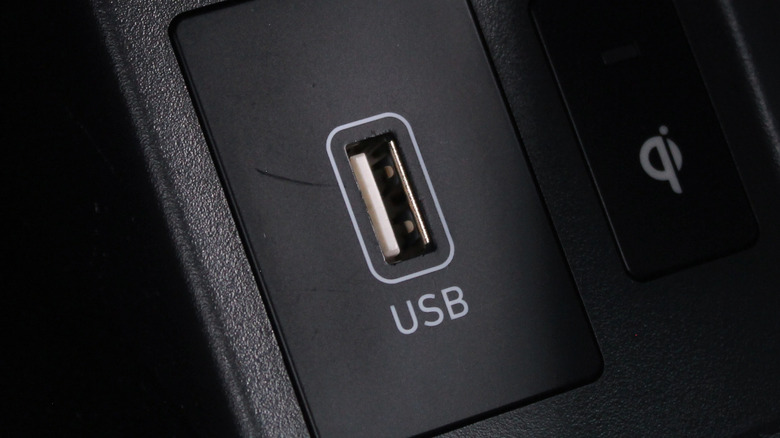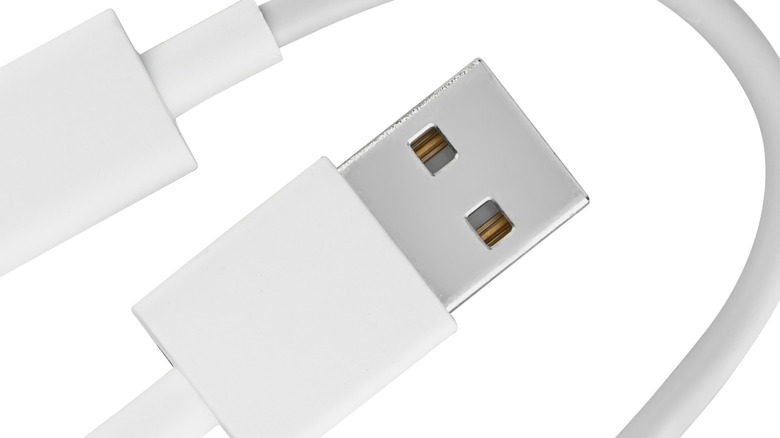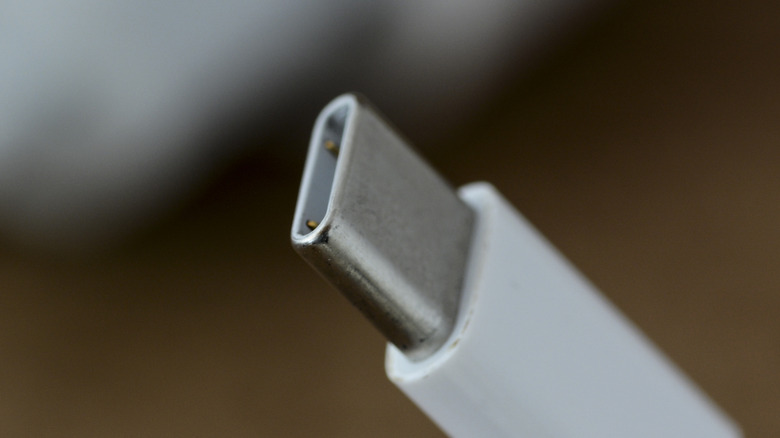Who Invented USB, And Does Anyone Own The Standard?
Living in a world chock-full of technology means living in a world full of plugs. HDMI, A/V, Ethernet, and more cable types, along with their respective ports, are everywhere, serving purposes that range from the transmission of energy to the transfer of information. Among the most common types is the USB, or Universal Serial Bus, which is capable of energy and data movement across a wide range of devices. That's to say that USB tech is everywhere, and at this point, there are even multiple different ways to use USB ports on monitors and other products. This is pretty astounding considering it wasn't invented until a mere few decades ago.
Yes, despite its pervasiveness in the modern tech world, the USB is a relatively new invention. It finds its roots in the mid-1990s, when it was developed by a team of engineers at Intel, who sought to streamline the process of data installation and connecting peripherals like keyboards and mice to computers, while also reducing the amount of required hardware. It goes without saying that the Intel team was successful, with Ajay Bhatt commonly cited as the driving force behind the creation of the USB. Though Bhatt retired from his work at Intel back in 2016, closing out an over-25-year tenure there, it's no stretch to say that the impact of his time there will be felt for many more decades to come.
Of course, Bhatt is merely credited as the creator of the USB. At this point, who is considered the tech's owner?
No one actually owns USB technology
USB is one of the most influential technological developments of the modern era. Therefore, one would think that whoever was responsible for its creation would be quick to patent it and, in turn, profit off of it immensely. Surprisingly, such a lucrative creation hasn't been monetized in this way. From the moment it hit the market, Intel elected to make USB royalty-free for all who seek to use it. Bhatt doesn't mind, either, as he told Business Insider in 2015, "I don't do these things for money. I did this to bring about change, and it's not very often that somebody gets a chance to bring about this big a change."
With all of that said, the matter of USB's ownership doesn't end here. The USB Implementers Forum should also be highlighted, as it's a key piece to the USB "ownership" puzzle. This non-profit group comprises representatives from various companies that contributed to the development of USB decades ago, including Intel, Microsoft, Apple, and others. Its mission is to oversee the use and implementation of USB elements across the tech world. It also contributes to the evolution of USB technology, ensuring it meets rigorous standards to maintain its quality. One has to wonder how the USB-IF feels about the USB drive designed to self-destruct.
The USC-IF has made great strides in USB technology throughout the years. It should come as no surprise that it's behind its increasingly common and capable successor.
The USB-IF's efforts have led to the USB-C
Though the USB cable and port combination was a game-changer in its time, it is beginning to get a bit dated. As the decades have wore on, different types of USB connections have been created, including mini USBs, micro USBs, and super speed USB micro, to name a few. Seeing as it's the governing body behind USB creation and improvement, the USB-IF has overseen these changes, and will likely continue to for decades to come. In recent years, tech users have begun to see its arguable biggest step forward find its spot in the marketplace. Phones, laptops, and more have adopted USB-C ports for, naturally, USB-C cables.
Back in 2014, the USB-C made its way to the tech forefront courtesy of the USB-IF and is quickly becoming the standard for most devices. Overall, it's not hard to figure out why. Unlike traditional USBs, they can be flipped completely over and still plug into a device without issue. Compared to the first USB, USB-C allows for quicker data transferring and improved streaming, and this newer USB is capable of delivering higher wattages — up to 240W if needed. Thus, many USB-C flash drives are fast, reliable, and worth the price. Even with these innovations, the purpose of USB tech remains largely the same from the original to USB-C: get one step closer to creating a universal cable type that completely eliminates the need for any others.
Ajay Bhatt and the team around him at Intel started something remarkable with the creation of the USB back in the 1990s. It remains a constant in the tech realm, ever-evolving to meet the demands of the marketplace without a standalone, money-hungry entity behind it.


